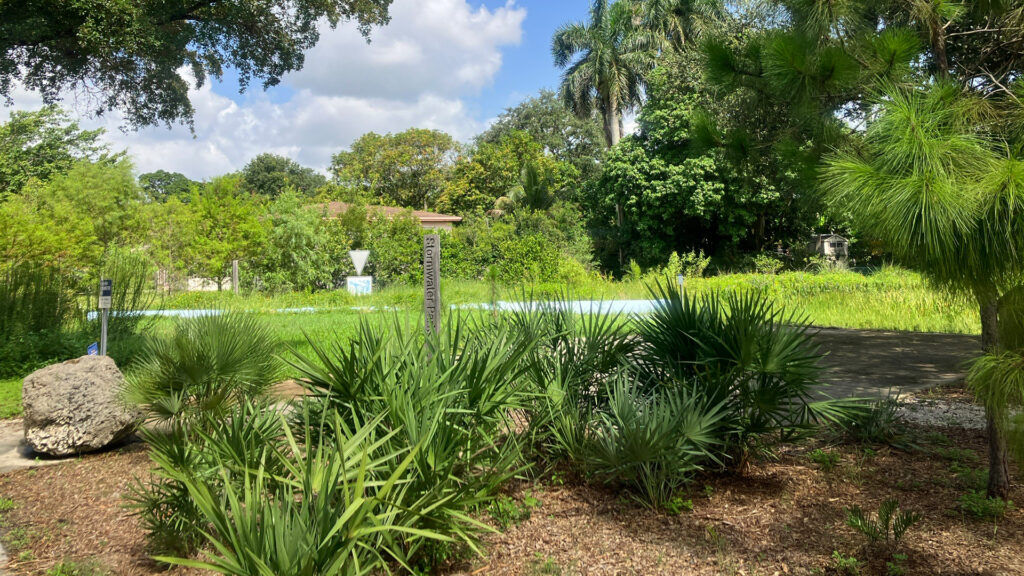By Amanda Prieto, Miami Waterkeeper
Miami Waterkeeper, along with a cohort of local resiliency groups, recently announced a groundbreaking initiative dubbed the Green Infrastructure Accelerator Project. The project will culminate with six to eight green infrastructure design solutions across urban Miami-Dade County, incorporating numerous opportunities for community involvement and participation.
This innovative work will be powered by an interactive online tool that solicits community input to identify green infrastructure opportunities in underutilized public spaces ripe for revitalization to reduce flooding, excessive heat and habitat loss. The project will also place significant emphasis on improving the environmental health of historically vulnerable communities within Miami-Dade County.
The official debut of the project’s interactive tool took place during a community event in the Village of El Portal on Nov. 4. El Portal is one of the prime locations under consideration for a design concept.

“These types of infrastructure builds not only safeguard our water quality and mitigate flooding but also enhance community resilience and offer a myriad of benefits from recreation spaces to habitat preservation and more,” said Miami Waterkeeper’s Executive Director and Waterkeeper, Rachel Silverstein, Ph.D. “The project serves as a confirmation of our mission to make Miami a global leader in climate resilience, grounded in science, rooted in nature and driven by community.”
This initiative was enabled through an Environmental Protection Agency grant awarded to Miami Waterkeeper to investigate ways to incorporate green infrastructure into Miami-Dade County’s built environment.
Together with One Water Academy, Everglades Law Center, the University of Miami College of Engineering, P.E.E.R. Group and the University of Miami Environmental Justice Clinic, Miami Waterkeeper was also awarded funding from Pisces Foundation to support community engagement in the project.
Green infrastructure leverages natural and semi-natural elements — such as parking lots, green spaces, trees, wetlands, canal banks, bioswales and other vegetation — to create a more sustainable, resilient and enjoyable urban environment while addressing various environmental challenges.
The public is invited to participate in the project by sharing their suggestions of where green infrastructure can be built through the user-friendly interactive tool, accessible on both your mobile device and desktop. To stay informed about the Green Infrastructure Accelerator Project and upcoming community events, visit the project website at www.miamiwaterkeeper.org/green_infrastructure.
Amanda Prieto, Ed.D., is senior program director at Miami Waterkeeper.
Sign up for The Invading Sea newsletter by visiting here. If you are interested in submitting an opinion piece to The Invading Sea, email Editor Nathan Crabbe at ncrabbe@fau.edu.



